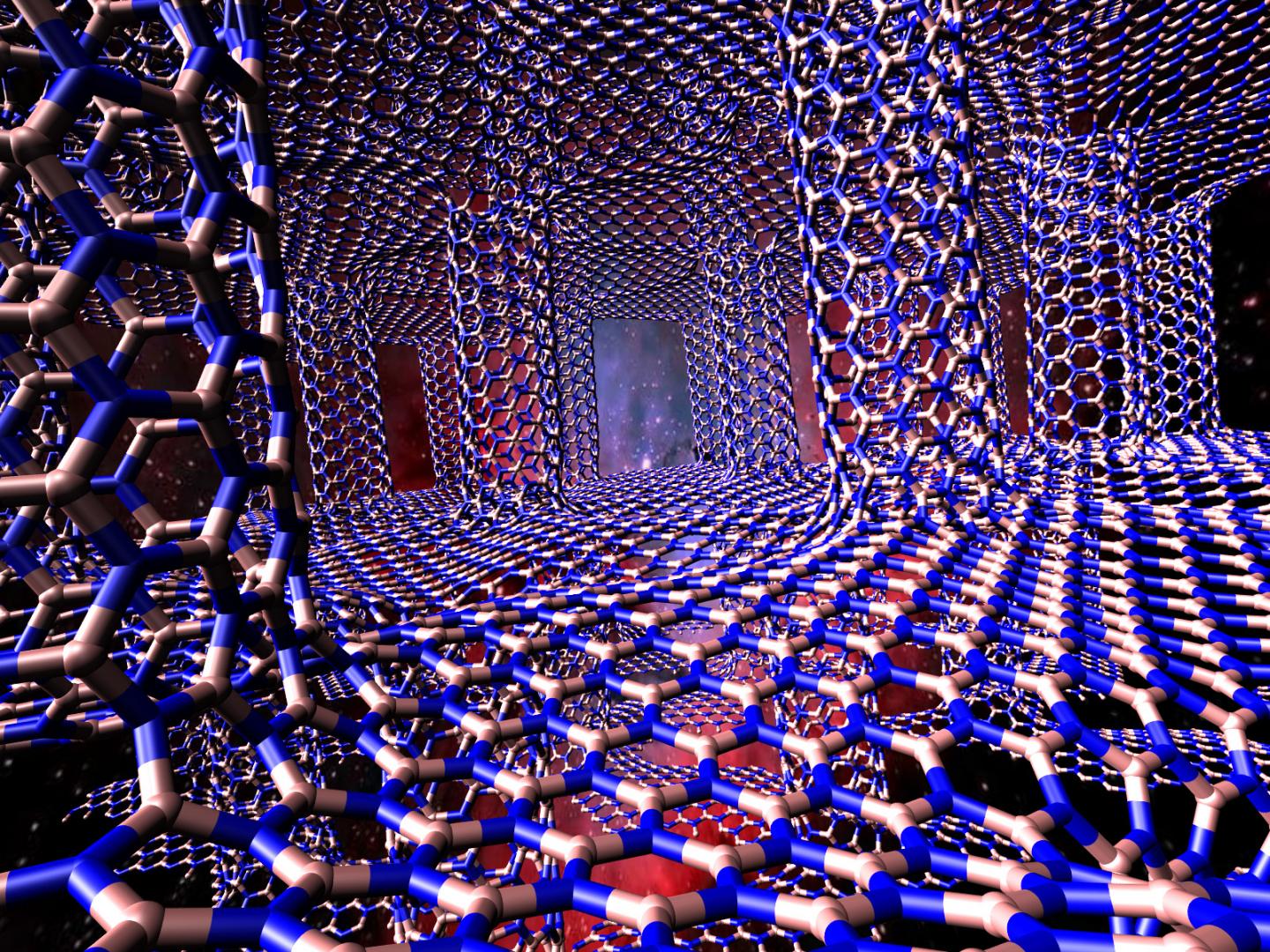As we stuff more and more transistors in silicon chips and our electronics circuitry goes more compact by the day, there is a need for next-gen coolants that will keep these electronic components cool and help them perform at their optimum levels. Previous studies have shown that graphene may have cooling capabilities, but 3D structures of boron nitride, which is also known as white graphene, have shown promising results as coolant in electronics devices.
Researchers at Rice University have completed their first theoretical analysis of how 3-D boron nitride might be used as a tunable material to control heat flow in electronics devices.
Researchers Rouzbeh Shahsavari and Navid Sakhavand explain that in two-dimensional form, hexagonal boron nitride (h-BN), looks just like the atom-thick form of carbon known as graphene; however, h-BN is a natural insulator and perfect graphene is a good conductor of electricity. However, when it comes to conduction of heat, h-BN is a good conductor like graphene. This, the researchers said, motivated them to study the possible use of boron nitride as a control material for heat flow.

CREDIT
Shahsavari Group/Rice University
Shahsavari explained that when it comes to conduction of heat inbetween layers of materials, not all materials are good at it because of which heat transfer doesn’t happen effectively and in case of electronics, this is something that has been one of the problems that researchers have been looking at since long.
“One of the drawbacks in electronics, especially when you have layered materials on a substrate, is that heat moves very quickly in one direction, along a conductive plane, but not so good from layer to layer. Multiple stacked graphene layers is a good example of this”, Shahsavari explains.
Looking at boron nitride in 2D (flat planes), heat moves ‘ballistically’, but the study shows how 3-D structures of h-BN planes connected by boron nitride nanotubes would be able to move phonons in all directions, whether in-plane or across planes, Shahsavari said.
The researchers calculated how phonons would flow across four such structures with nanotubes of various lengths and densities. They found the junctions of pillars and planes acted like yellow traffic lights, not stopping but significantly slowing the flow of phonons from layer to layer, Shahsavari said. Both the length and density of the pillars had an effect on the heat flow: more and/or shorter pillars slowed conduction, while longer pillars presented fewer barriers and thus sped things along.
While researchers have already made graphene/carbon nanotube junctions, Shahsavari believed such junctions for boron nitride materials could be just as promising. “Given the insulating properties of boron nitride, they can enable and complement the creation of 3-D, graphene-based nanoelectronics.
“This type of 3-D thermal-management system can open up opportunities for thermal switches, or thermal rectifiers, where the heat flowing in one direction can be different than the reverse direction,” Shahsavari said. “This can be done by changing the shape of the material, or changing its mass – say one side is heavier than the other – to create a switch. The heat would always prefer to go one way, but in the reverse direction it would be slower.”
The findings have been published in the American Chemical Society journal Applied Materials and Interfaces.
